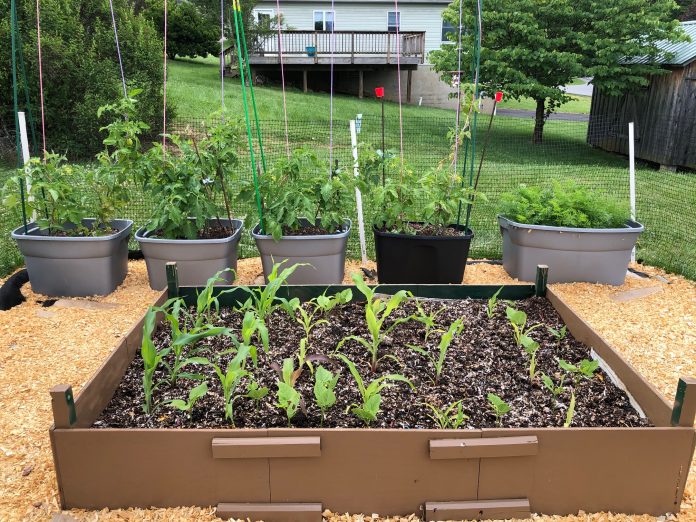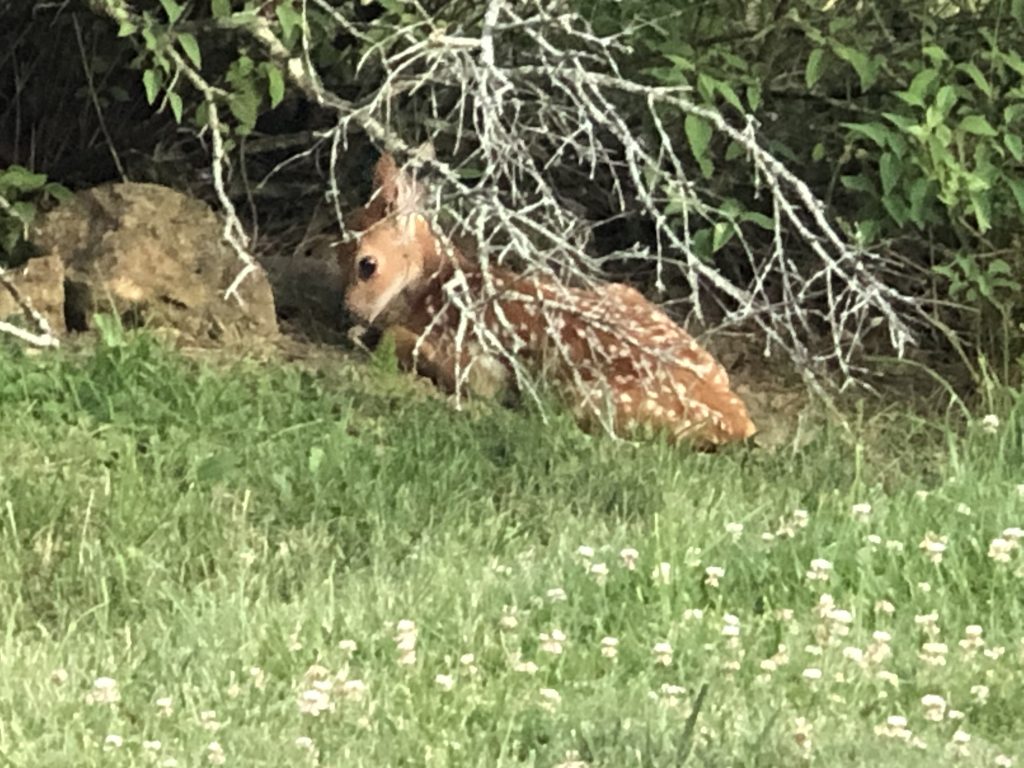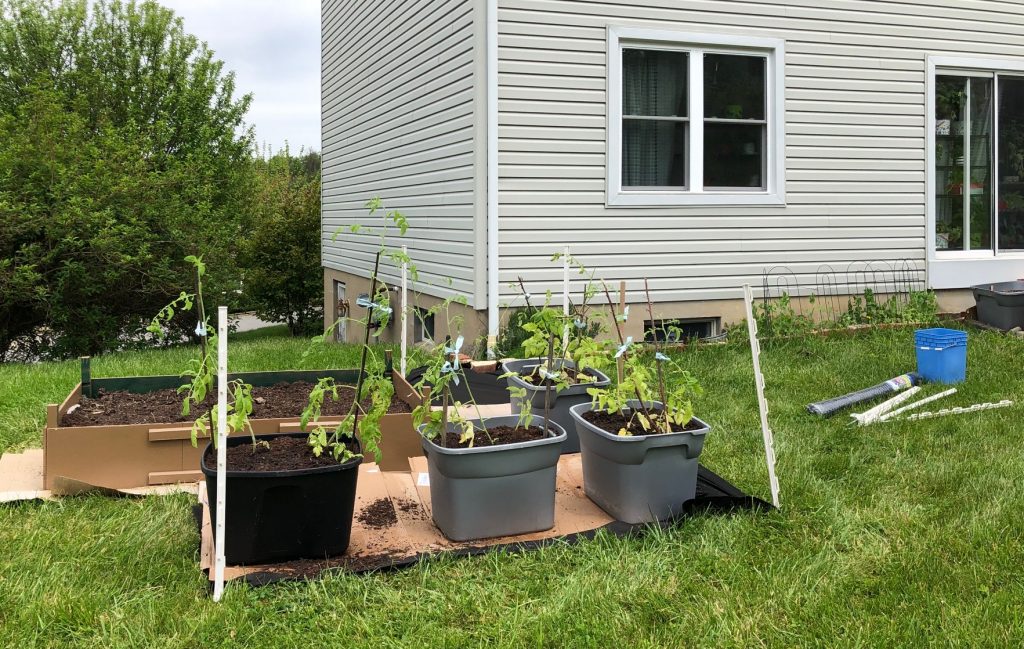
Most preppers worth their salt have at least “considered” what food they could grow in the event of a collapse. Some even have their own emergency seed banks built up. This pandemic is giving lots of us an opportunity to actually try out our plans and the timing worked out well for those of us in the Northern hemisphere. The spring planting season followed close on the heels of stay-at-home orders, so what was there to do at home but work on the garden?
Many Americans apparently had similar ideas, as garden stores have been doing a booming business and county extension offices have reported sold-out gardening courses. People are latching on to the idea of WWII -type Victory Gardens and suddenly “growing your own” is popular again.
Before this year I’ve mostly grown my veggies indoors. I just didn’t want to get into what I “thought” was the backbreaking labor of digging/tilling, weeding, watering, etc.
Last year I did put a few things out in storage tubs as a “container garden”, but the deer got some of it, blossom end rot got some of it, and the only things that produced really well for me was a variety of container zucchini and some butternut squash that practically grew itself out of the flower bed. I did have those small victories though, so I tried not to be discouraged.
This year I had already decided to try again before the ‘Rona struck, so I had plans already in motion. I had seeds already started in the window and a vague idea of what I wanted to try. When the pandemic took hold I had even more incentive because I wasn’t sure what the heck was gonna happen with the food supply – especially with the talk of an additional wave of illness in the fall.
I got busy and built a 4’x6’ raised bed out of old shelves and plotted out what what going into container tubs and how I was going to fence it all to keep the critters out that plagued me so last year.
Raised bed
The soil in my yard is mostly clay, so it’s not great for gardening unless it is heavily amended (the back-breaking labor I didn’t want to do). That’s why I built a raised bed instead. I actually started the raised bed last fall by laying down cardboard to kill the grass and feed the worms. Then over the winter I gradually layered on last year’s garden waste and various bags of compost as I was able to produce it in the garage. By spring I added a few purchased bags of soil and soon the frame of cardboard was ready to be replaced by the old wooden shelves I spoke of.

Container planting
The rest of my garden is in plastic storage tubs and patio planters for this year. The digging labor was replaced by a need to purchase soil, but that was an okay trade-off for me given that I’d have had to purchase bags and bags of manure and other soil amendments anyway if I planted in the ground. The only thing I have currently growing directly in the ground is snap peas, and that’s just because they are in what I originally intended to be a flower bed next to the house.
The tubs are a cheap alternative to overpriced decorative planters, you just need to drill drainage holes in the bottom. (You don’t need a drill either – I used heavy duty kitchen shears.) You can then use the lid of the container as a drip tray if you want. This is also a great option for apartment dwellers with a sunny balcony. You can at least grow “something”, even if it isn’t a full blown garden.
There are a wide variety of vegetables available that are compact and perfect for container growing. I found that out with my zucchini last year. You’d be surprised how many zukes I got out of one tub planting of a container variety I bought seeds for online.
Fencing
Then I had to plan for fencing. Last year the deer ate almost everything I tried to grow outside. It was incredibly frustrating to excitedly watch for ripening tomatoes only to go out in the morning and find them gone – with nothing but munched stems and hoof prints left to tell the tale.

This year I found some step-in plastic posts and lightweight plastic mesh to mount upon it at the big box home improvement store. Once I had a plan for how big my garden area was going to be I put in my posts and fencing. It’s not permanent or beautiful, but looks decent enough to keep the neighbors happy and I didn’t have to dig post holes. We’ll see how well it holds up til fall.

The goal for this year’s pandemic garden was to grow veggies that I liked and could eat at harvest, but which could also be dehydrated or frozen for future use. The list is rather long, so I’ll be breaking this down into separate articles to keep everyone from getting bored.
My list includes:
Snap Peas
Carrots
Cabbage
Corn
Green beans – pole and bush varieties
Butternut squash
Zucchini
Plum Tomatoes
Cherry Tomatoes
Jalapeno peppers
Onions
In addition I’m still growing food in my window to include:
Cherry Tomatoes
Lettuce
Chives
Cabbage
Herbs for cooking
If you want to start a pandemic garden yourself, it’s really not too late. Think about what kinds of veggies you use the most through the year, then think about what growing conditions you have available. I’ll bet there is a pandemic gardening solution in there somewhere, even if it’s a compromise. It’s not too late in the season to get started if you use pre-started nursery plants for things like tomatoes and peppers. For other veggies, there are often varieties that will tolerate a late spring seed planting for late summer or fall harvest.
The bottom line here is about being flexible and open minded. You don’t have to have a huge yard or even a yard at all to be able to supplement your groceries with homegrown produce. You’d be surprised how much food you can grow in little corners of your property or balcony or even window boxes if you use your imagination. Failing that, you can grow indoors as I’ve spoken about before.
Stay tuned for the next installment where I talk about my first few outside plantings of the spring.



